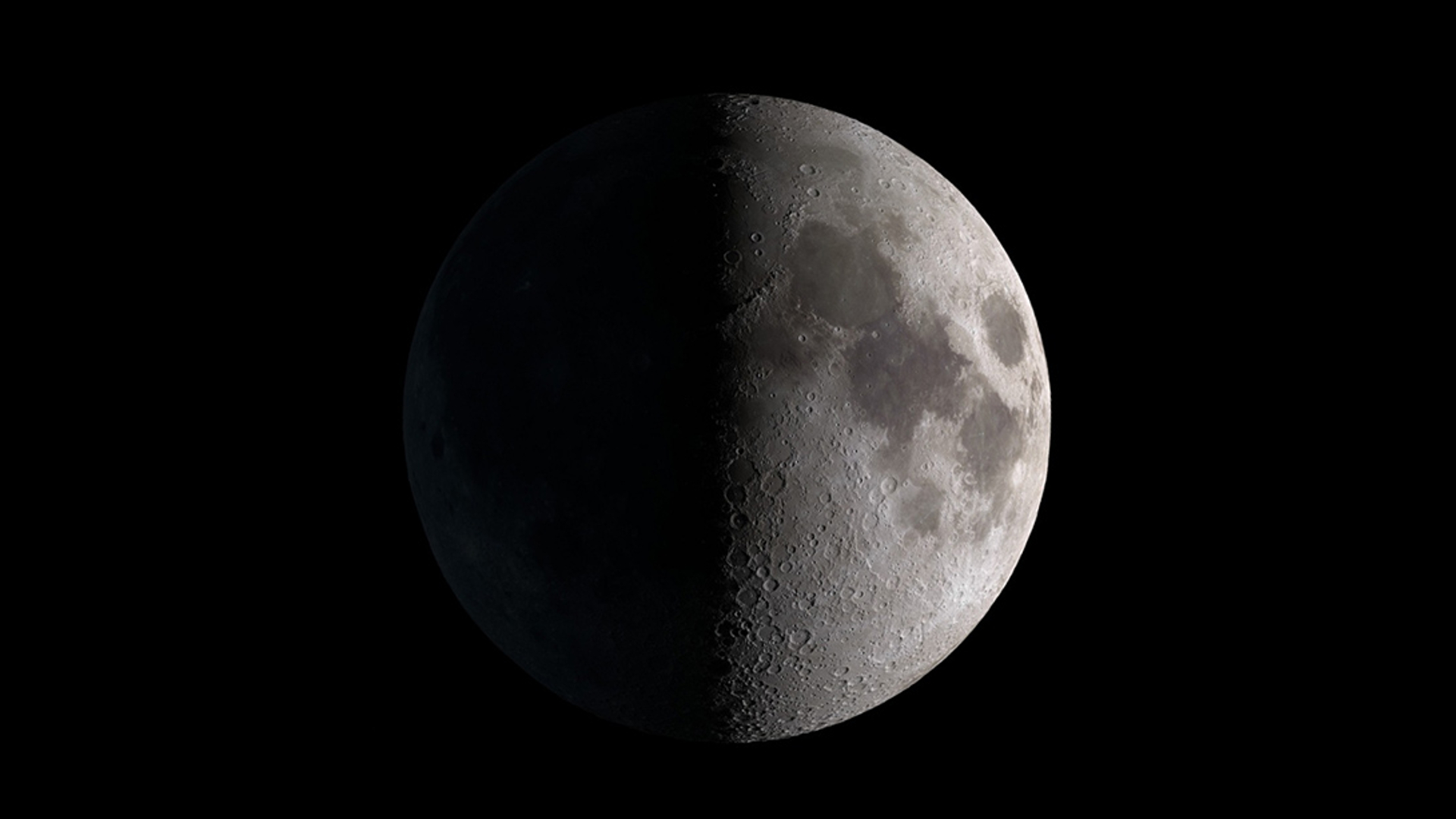See the moon appear half-lit during its closest first quarter phase tonight (Oct. 2)
October's first quarter will see the moon at the closest it has been during this phase throughout 2022.

The moon will be almost exactly half illuminated by the sun on Sunday (Oct. 2), during a phase called the first quarter. This will also mark the closest the moon is to Earth during its first quarter phases of 2022.
During this close first quarter moon, the moon will be about 229,985 miles (370,125 kilometers) from Earth. Following Oct. 2, the next first quarter moon happens on Nov. 1.
On Sunday, from New York City the moon will become visible at around 6:53 p.m. EDT (2253 GMT) 21 degrees above the horizon to the south. The moon will by high in the sky at around sunset and it will itself set around midnight.
Related: What is the moon phase today? Lunar phases 2022
The moon takes approximately 29.5 days to orbit Earth meaning that its cycle lasts around four weeks and a first quarter moon happens around once a month.
The name "first quarter" may initially sound confusing as the moon is half illuminated, but what the term actually refers to is the fact that it is a quarter of the way through its 29.5-day cycle. Which half of the moon a sky watcher sees lit during this phase of the moon depends on where they are on Earth.
Leading up to the first quarter the moon will set later every day and will be visible for longer into the night. While at the first quarter phase the moon rises around noon and sets around midnight. This means that it is high in the sky in the evening during the first quarter moon making it great for viewing.
Get the Space.com Newsletter
Breaking space news, the latest updates on rocket launches, skywatching events and more!

Looking for a telescope to see the moon? We recommend the Celestron Astro Fi 102 as the top pick in our best beginner's telescope guide.
By the time the moon reaches the full moon phase of its cycle, it will be visible for most of the night. Heading towards the full moon phase more and more of the moon's face becomes lit by the sun with the progression of light across the disk called "waxing." After the first quarter, the next major moon phase is the waxing gibbous moon which leads to the full moon.
The first quarter falls exactly between the new moon — when the moon appears almost invisible and its face is totally dark as seen from Earth — and the full moon when it appears fully illuminated.

Following the full moon, the light side of the moon will recede — a progression called waning — heading towards the third quarter moon at which point its faces will be almost exactly 50% illuminated again. This leads to the new moon and the start of a new lunar cycle.
Because the moon's orbit around Earth is a slightly flattened or elliptical circle, sometimes it is at its closest to our planet — its perigee — and sometimes it is at its furthest — its apogee.
A supermoon is when the perigee occurs during a full moon or a new moon while a full moon or new moon that falls around the apogee is called a micromoon.
If you'd like to take a more in-depth look at our rocky companion our ultimate guide to observing the moon will help you plan your next skywatching venture whether it be exploring the lunar seas, mountainous terrain or the many craters that blanket the landscape. You can also see where astronauts, rovers and landers have ventured with our Apollo landing sites observing guide.
Looking for a telescope or binoculars to observe the moon and don't know where to start? Our guides for the best binoculars deals and the best telescope deals now can help.
If you're interested in taking your lunar photography to the next level our how to photograph the moon guide is full of handy tips on techniques, times and tools to help you start capturing impressive lunar photos. Our best cameras for astrophotography and best lenses for astrophotography can also help you make sure you are fully prepared and kitted out for your next moon-watching adventure.
Follow us on Twitter @Spacedotcom and on Facebook.
Join our Space Forums to keep talking space on the latest missions, night sky and more! And if you have a news tip, correction or comment, let us know at: community@space.com.

Robert Lea is a science journalist in the U.K. whose articles have been published in Physics World, New Scientist, Astronomy Magazine, All About Space, Newsweek and ZME Science. He also writes about science communication for Elsevier and the European Journal of Physics. Rob holds a bachelor of science degree in physics and astronomy from the U.K.’s Open University. Follow him on Twitter @sciencef1rst.









